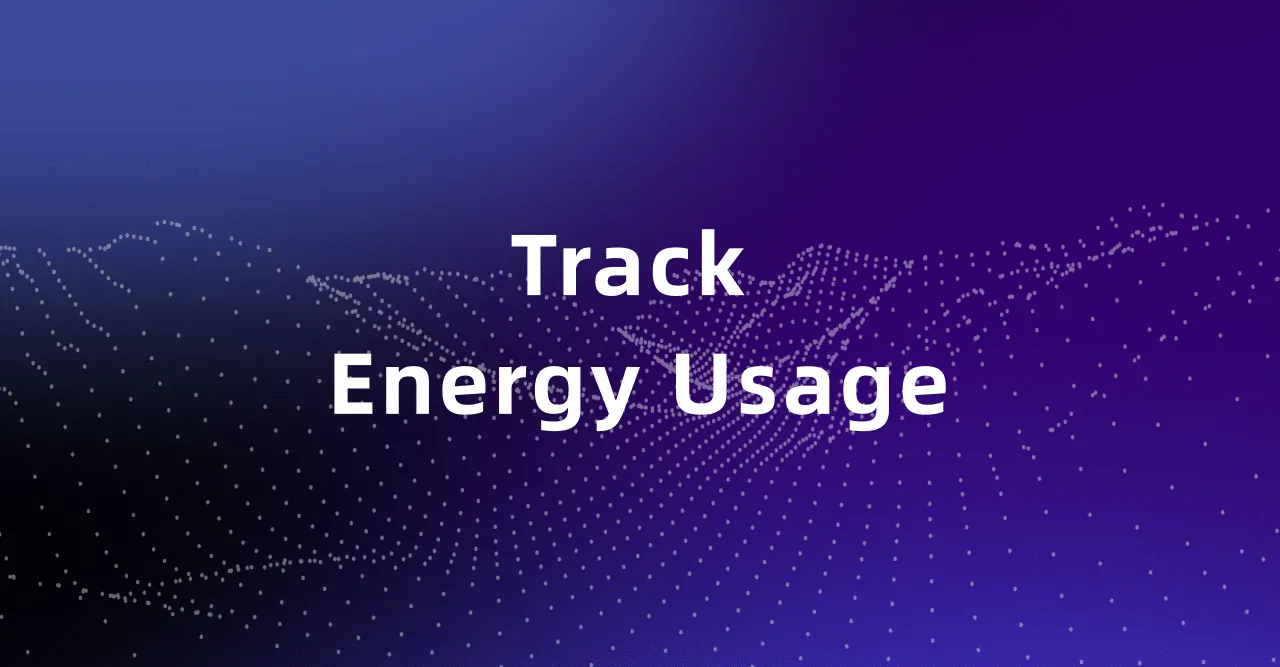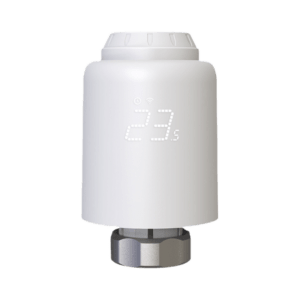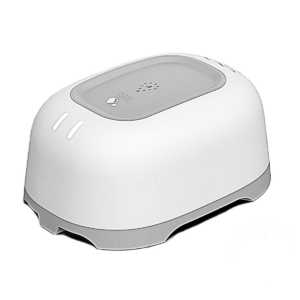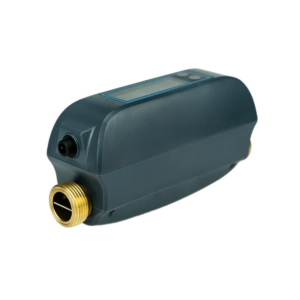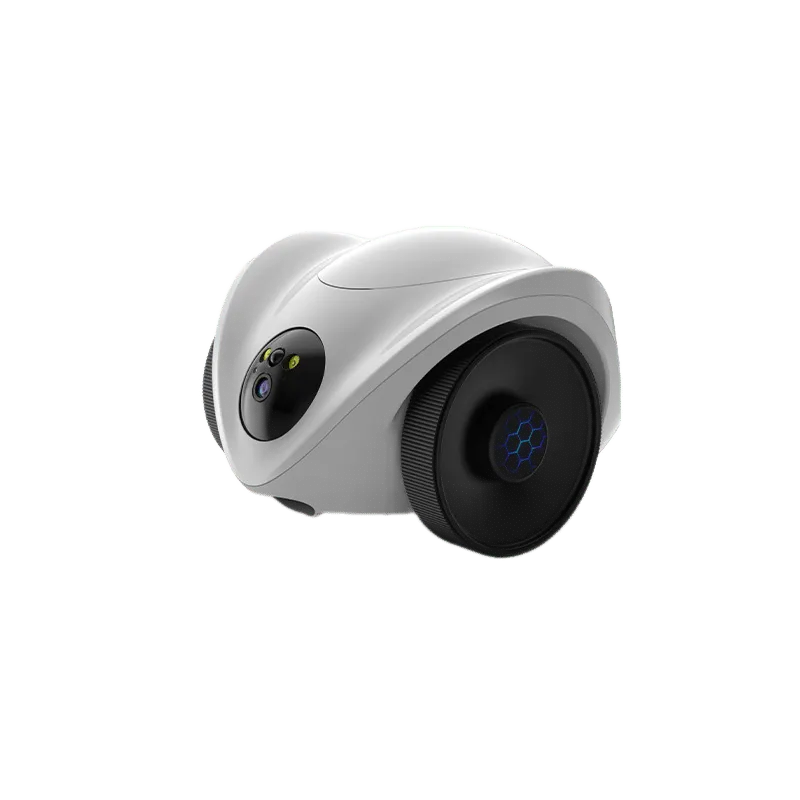As energy prices rise and sustainability becomes a priority, monitoring home energy usage is essential for homeowners. However, checking each appliance individually is time-consuming and impractical. Many homeowners find it challenging to track where their electricity is going, which devices consume the most power, and how to reduce their bills.
This article explores how modern smart energy solutions allow homeowners to track and optimize energy use without manually checking each appliance. We will cover:
- The difference between individual appliance monitoring and whole-home energy tracking.
- The best smart energy monitors available today.
- How AI-powered analytics and utility reports simplify energy tracking.
- Practical ways to optimize energy consumption using real-time data.
1. Understanding Whole-Home Energy Monitoring
1.1 Individual Appliance Tracking vs. Whole-Home Monitoring
There are two main approaches to energy tracking:
| Feature | Individual Appliance Tracking | Whole-Home Energy Monitoring |
|---|---|---|
| Method | Uses smart plugs or meters | Uses whole-house energy meters |
| Scope | Single appliance | Entire household power usage |
| Installation | Plug-and-play | Installed in the breaker panel |
| Insights | Specific device insights | Comprehensive energy overview |
| Cost | Low per device | Higher upfront but broader coverage |
Why Whole-Home Monitoring is More Effective:
- Instead of checking individual devices, you get a complete overview of all energy consumption.
- AI-powered monitors can identify which appliances are consuming the most energy without manual checking.
- Whole-home monitors can track hidden energy drains like standby power consumption.
1.2 How Real-Time Energy Meters Work
Whole-home energy meters work by installing Current Transformer (CT) sensors in your breaker panel. These sensors measure electrical current flowing through the main wires and send real-time data to a smartphone app or web dashboard.
How Energy Flows in a Home
graph LR A[Main Power Supply] -->|Electricity Flow| B[Breaker Panel] B -->|Current Sensors Track Usage| C[Smart Energy Monitor] C -->|Data Sent to App| D[User Interface] D -->|Provides Insights & Alerts| E[Homeowner]
Modern smart meters provide:
- Real-time tracking of household electricity usage.
- Breakdowns by time periods (daily, weekly, monthly).
- Alerts for abnormal energy consumption (e.g., faulty appliances).
1.3 AI’s Role in Detecting Energy Consumption Patterns
Traditional energy meters only provide raw data, but AI-powered systems take energy monitoring to the next level by automatically recognizing patterns.
How AI Optimizes Energy Usage:
- Analyzes Usage Trends – Detects which devices are consuming the most power.
- Predicts High-Usage Periods – Helps homeowners adjust energy consumption.
- Automates Energy Optimization – Suggests cost-saving strategies (e.g., running appliances during off-peak hours).
Example: AI-Driven Energy Analysis
pie title Energy Consumption Breakdown "HVAC": 45 "Kitchen Appliances": 20 "Lighting": 15 "Entertainment & Misc": 10 "Standby Power Loss": 10
AI-based solutions like Grus Home Energy APP AI can:
- Detect inefficient appliances without checking each one manually.
- Suggest energy-saving strategies based on real-time patterns.
- Identify power-hungry devices and recommend automation solutions.
2. Best Ways to Track Energy Usage Without Checking Each Appliance
Now that we understand whole-home energy monitoring, let's explore the best tools and techniques to track electricity usage without manually checking each device.
2.1 Smart Home Energy Monitors
One of the most effective ways to monitor energy consumption is by installing a whole-home energy monitor. These devices are connected to the electrical panel and provide real-time tracking of household energy usage.
Example: WattPanel-3X & WattPanel-2X
📌 WattPanel-3X & WattPanel-2X are advanced split-phase electric monitors designed for accurate and real-time tracking.
Features:
- Real-time monitoring via a mobile app.
- Automatic detection of high-energy appliances.
- Alerts and recommendations for energy savings.
- Historical data for monthly usage analysis.
sequenceDiagram participant Homeowner participant SmartEnergyMonitor participant AIProcessor participant MobileApp Homeowner ->> SmartEnergyMonitor: Installs and configures device SmartEnergyMonitor ->> AIProcessor: Sends real-time energy data AIProcessor ->> MobileApp: Generates insights & alerts MobileApp ->> Homeowner: Displays energy reports and suggestions
✅ Benefits:
✔ No need to check individual appliances manually.
✔ Identifies inefficient devices automatically.
✔ Provides long-term insights to optimize energy use.
2.2 Utility Company Energy Reports
Many electricity providers offer free monthly reports that help homeowners understand their energy usage. These reports provide a general overview without requiring any additional hardware.
How to Use Utility Reports for Energy Savings
📊 Typical energy report sections:
- Daily & monthly consumption trends.
- Comparison with similar households.
- Breakdown of peak usage hours.
- Recommendations for energy savings.
gantt title Sample Monthly Energy Usage Report dateFormat YYYY-MM-DD section Energy Usage Peak Hours Consumption :done, 2024-02-01, 2024-02-07 Off-Peak Usage: active, 2024-02-08, 2024-02-14 Reduced Energy Consumption : 2024-02-15, 2024-02-21 New Energy Efficiency Strategy Implemented : 2024-02-22, 2024-02-28
✅ Benefits:
✔ No installation required.
✔ Easy to access through the utility provider’s app or website.
✔ Provides an overview of energy usage trends.
🔹 Pro Tip: Compare monthly reports to identify seasonal changes in energy use!
2.3 AI-Powered Energy Analysis
AI-powered solutions go beyond basic tracking by using machine learning to detect patterns and suggest optimizations.
Example: Grus Home Energy App AI
Grus Home Energy App AI provides:
- Predictive analytics for future energy consumption.
- Automated recommendations for cost savings.
- Anomaly detection to identify unusual power surges.
stateDiagram [*] --> DataCollection DataCollection --> AIAnalysis : Detect Patterns AIAnalysis --> Recommendations : Suggest Optimizations Recommendations --> UserAction : Apply Changes UserAction --> [*]
✅ Benefits:
✔ Automatically identifies wasteful energy use.
✔ Optimizes appliance usage patterns.
✔ Reduces electricity bills over time.
🔹 Pro Tip: AI-powered energy analysis works best when combined with smart meters and automation systems!
2.4 Smart Plugs for High-Energy Devices
While whole-home energy monitors track total consumption, smart plugs allow homeowners to monitor and control individual high-energy appliances.
How Smart Plugs Complement Whole-Home Monitoring
✅ Track energy-hungry devices like heaters, gaming PCs, or refrigerators.
✅ Set automation rules to turn off unused appliances.
✅ Monitor standby power drain to eliminate phantom loads.
Example: Using Smart Plugs with a Smart Energy System
graph TD; A[Whole-Home Smart Monitor] -->|Identifies High Usage| B[AI Energy Analytics] B -->|Recommends Device Monitoring| C[Smart Plug Installation] C -->|Tracks Individual Device Usage| D[Energy Report] D -->|Adjusts Automation Rules| E[Optimized Energy Consumption]
✅ Benefits:
✔ Monitors and controls specific high-energy devices.
✔ Reduces unnecessary power consumption.
✔ Works alongside whole-home monitors for complete tracking.
🔹 Pro Tip: Use smart plugs for space heaters, old refrigerators, or entertainment systems to reduce energy waste!
3. How to Optimize Energy Use Based on Data
After setting up a whole-home energy monitor, analyzing utility reports, and leveraging AI-driven energy insights, the next step is optimization. By making data-driven adjustments, homeowners can reduce electricity bills without sacrificing comfort.
Here’s how to optimize energy use based on real-time data.
3.1 Identifying Peak Usage Hours & Shifting Consumption
Energy providers charge higher rates during peak hours when demand is highest. By shifting energy-intensive activities to off-peak times, homeowners can cut costs significantly.
How to Find Peak Hours
- Check your utility company’s rate plan for peak and off-peak pricing.
- Use smart energy monitors to analyze when consumption is highest.
- Compare daily usage patterns in your monitoring app.
gantt title Example of Peak & Off-Peak Energy Usage dateFormat HH:mm section Energy Usage High Consumption :done, 07:00, 09:00 Medium Usage :active, 10:00, 16:00 Low Usage (Off-Peak) : 22:00, 06:00
🔹 Optimization Tip:
- Run washing machines, dishwashers, and EV chargers at night to avoid peak pricing.
- Schedule thermostats and HVAC systems to reduce power use during peak hours.
✅ Benefits:
✔ Saves money on electricity bills.
✔ Reduces grid demand during peak times.
✔ Improves overall home energy efficiency.
3.2 Automating Appliances to Run During Low-Cost Periods
Smart home automation allows homeowners to schedule appliances to run at optimal times.
How Automation Reduces Energy Waste
✅ Smart thermostats optimize heating & cooling.
✅ Smart lights turn off when not in use.
✅ Programmable smart plugs power down standby devices.
✅ Home energy monitors integrate with AI to automate high-consumption devices.
sequenceDiagram participant User participant SmartHomeSystem participant EnergyMonitor participant AIEngine participant Appliances User ->> SmartHomeSystem: Sets energy-saving automation rules SmartHomeSystem ->> EnergyMonitor: Monitors real-time usage EnergyMonitor ->> AIEngine: Analyzes consumption patterns AIEngine ->> Appliances: Automates appliance usage based on low-cost periods
🔹 Optimization Tip:
- Set water heaters and HVAC systems to run during off-peak times.
- Use motion sensors to turn lights on/off automatically.
- Program smart plugs to power down entertainment systems at night.
✅ Benefits:
✔ Reduces manual energy management.
✔ Optimizes high-energy appliances for lower costs.
✔ Enhances overall home efficiency.
3.3 Combining Renewable Energy Sources with Smart Tracking
For homeowners using solar panels or battery storage, smart energy tracking can maximize self-sufficiency and reduce reliance on the grid.
How to Optimize Solar Power Usage
- Monitor solar generation vs. consumption in real time.
- Store excess energy in batteries for nighttime use.
- Use automation to prioritize solar power during daylight hours.
graph TD; A[Solar Panel] -->|Generates Power| B[Battery Storage] B -->|Stores Energy| C[Smart Energy Monitor] C -->|Tracks Usage & Solar Input| D[AI Optimization System] D -->|Allocates Energy Efficiently| E[Home Appliances]
🔹 Optimization Tip:
- Charge EVs, heat water, and run appliances when solar production is highest.
- Use stored battery energy at night to minimize grid reliance.
- Set up smart energy systems to switch between solar and grid power automatically.
✅ Benefits:
✔ Maximizes solar energy self-consumption.
✔ Reduces electricity costs and reliance on fossil fuels.
✔ Increases energy resilience during power outages.
Homeowners don’t need to check each appliance manually to optimize energy usage. With whole-home energy monitors, AI-driven analytics, and smart automation, tracking and managing electricity consumption has never been easier.
